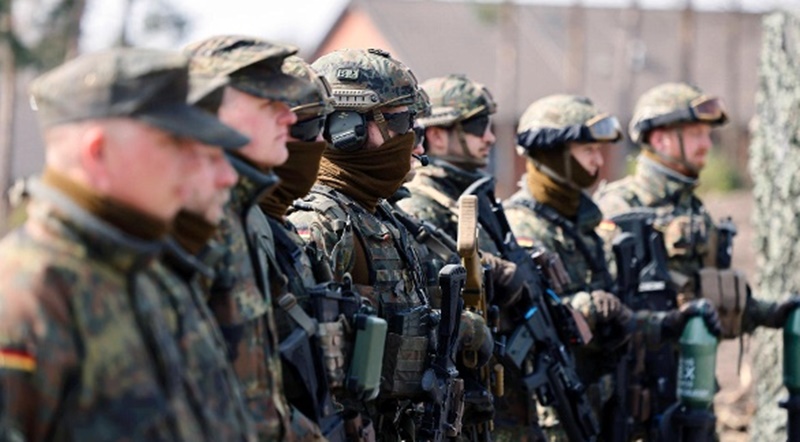
In response to the Russian aggression in Ukraine, NATO has increased its troops in the eastern part of the alliance area. The soldiers are now ready for action. Russia could see that as a provocation.
NATO is making progress with its efforts to strengthen the eastern flank. As a spokeswoman for the military alliance confirmed to the German Press Agency, the four new multinational battlegroups in Hungary, Romania, Bulgaria and Slovakia have reached the first stage of operational readiness. Its construction was only announced a few weeks ago.
NATO initially did not comment on the exact composition and size of the so-called battle groups. According to a statement from March 21, however, 2,100 soldiers from countries such as Germany, the Netherlands, the Czech Republic and the USA were already present in Slovakia at the time. In Hungary there were 800 soldiers from Croatia, in Bulgaria 900 from the USA and in Romania 3,300 from countries such as France, Belgium, Italy and the USA.
Increase deterrence and defense capabilities
The new battlegroups are intended to further increase deterrence and defense capabilities in light of the Russian war against Ukraine. So far, NATO has only permanently stationed multinational units in the Baltic states of Estonia, Latvia and Lithuania as well as in Poland. Normally, these battlegroups are about 1,000 to 1,200 soldiers strong, but they have recently been significantly strengthened because of the Ukraine war.
Germany is currently leading a battle group of around 1,600 soldiers in Lithuania. Air force soldiers with the Patriot anti-aircraft missile system were also deployed to Slovakia in March.
It was initially unclear when the new battlegroups in Slovakia, Hungary, Romania and Bulgaria would also receive the so-called Full Operational Capability certification after the Initial Operational Capability. It is also still unclear what the long-term NATO presence on the eastern flank should look like.
One option is to station brigades in the eastern alliance area for the first time. They could each be around 5,000 soldiers strong and be supplemented, for example, by elements of the air and sea forces or special forces.
Increased tensions with Russia
However, such a step is likely to further increase tensions with Russia. Moscow would probably argue that the long-term deployment of such brigades is not compatible with the NATO-Russia Founding Act. In it, NATO committed itself to refraining from permanently stationing “substantial combat troops” in the eastern alliance area.
The battalion-sized battlegroups stationed up to now do not fall into this category according to the NATO interpretation. At the same time, it is considered unlikely that NATO will refrain from stationing brigades because of the Founding Act. Secretary General Jens Stoltenberg has already made it clear that Russia cannot expect NATO to stick to all the 1997 agreements.
The Founding Act has a clear connection to the security environment in 1997, when Russia was still seen as a strategic partner, he said recently. Today we are in a completely different security environment and NATO will do “what is necessary”.

